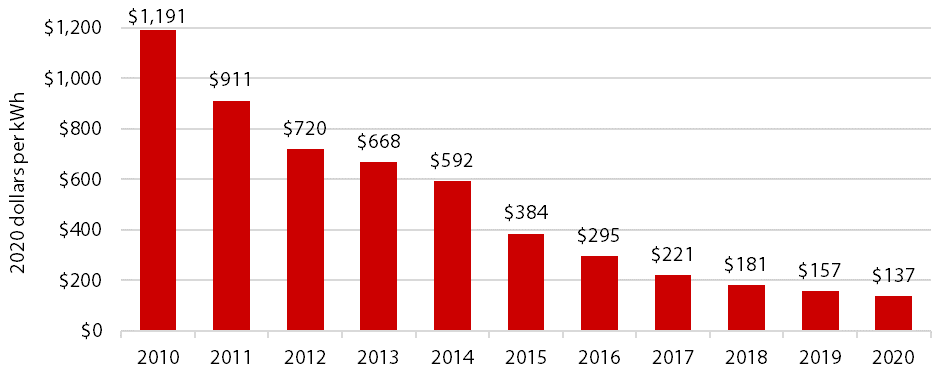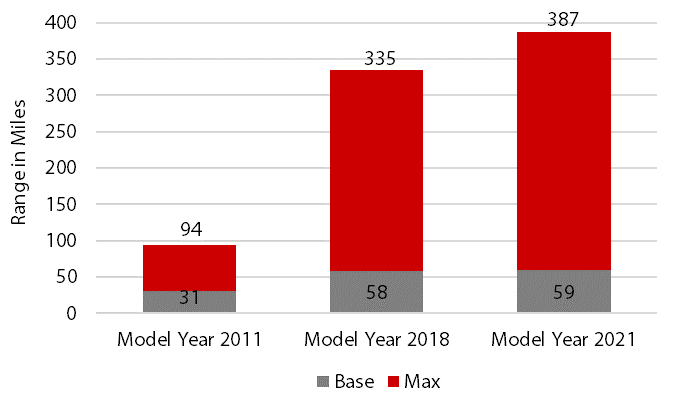Blog Post
Insight: Have We Reached an Electric Vehicle Tipping Point?
By: Thomas Holst
Note: The opinions expressed are those of the author alone and do not reflect an institutional position of the Gardner Institute. We hope the opinions shared contribute to the marketplace of ideas and help people as they formulate their own INFORMED DECISIONS™.
Author Malcolm Gladwell defined a tipping point as a juncture at which a series of small changes becomes significant enough to cause a larger, more important change.
Tipping points exist in the global climate conversation. On one hand, scientists warn that global warming may push us to a point where rising temperatures are incapable of a reversal. On the other hand, battery technology improvements spur widespread adoption of electric vehicle (EV) transportation, eliminating emissions that warm the atmosphere.
Technology advances and infrastructure investments have created a tipping point for wider adoption of EV transportation. Battery pack costs and EV range, the distance travelled on an electric charge, are two improvements reducing barriers to switching from an internal combustion engine vehicle to an EV.
Battery pack costs have decreased almost 20% annually since 2010 (see Figure 1). The downward trend is expected to continue, with 2030 costs forecast at $58/kWh. Cost reductions have continued despite supply chain shortages of battery components, forcing EV manufacturers to utilize other metals.
Figure 1: Battery Pack Costs, 2010–2020

Source: Bloomberg New Energy Finance
EV range is critical because many new buyers have range anxiety, the fear of an insufficient charge to cover the road distance needed to reach a destination. However, motorists’ range anxiety is allayed by a fourfold increase in EV driving range over the last decade, from a max range of 94 miles in 2011 to 387 miles in 2021 (see Figure 2).
Figure 2: EV Range for Model Years 2011, 2018, and 2021

Note: In Model Year 2011, the U.S. market had 4 EV models; in Model Year 2018, 24;
and in Model Year 2021, 51.
Source: Bloomberg New Energy Finance
Growth in direct current fast charging stations also alleviates range anxiety. Fast charging stations take 15 to 20 minutes for a full charge, a time comparable to a stop for gasoline on I-15. Utah has 100 fast charging stations with 277 charging ports. Nationwide, the number of fast charging stations has more than doubled over the last four years (see Figure 3). The recently signed Bipartisan Infrastructure Package includes funding for additional charging stations.
Figure 3: U.S. Growth in EV Fast-Charging Stations, 2018–2021

Source: Alternative Fuels Data Center
Finally, consumers want an electric vehicle that is cost competitive with a gasoline vehicle. Identical models offered as an EV and with an internal combustion engine typically carry an EV premium. However, fuel costs favor the EV by about $1,000 per annum (see Table 1).
Table 1: EVs Save $1,000 in Fuel Costs per Year

Sources:
1. Annual miles per light-duty vehicle, Highway Statistics 2019, fhwa.dot.gov
2. U.S. average residential cost of electricity per kWh, July 2021; eia.gov
3. U.S. average retail gasoline price (all grades, all formulations), Sept. 2021; eia.gov
4. Median efficiency of 2021 model year electric vehicles is 3.1 miles/kWh; fueleconomy.gov
5. Median fuel economy of 2021 model year gasoline vehicles; fueleconomy.gov
These small EV changes collectively hold promise for a tipping point to wider adoption of electric vehicles.
Thomas Holst is the senior energy analyst at the Kem C. Gardner Policy Institute.

